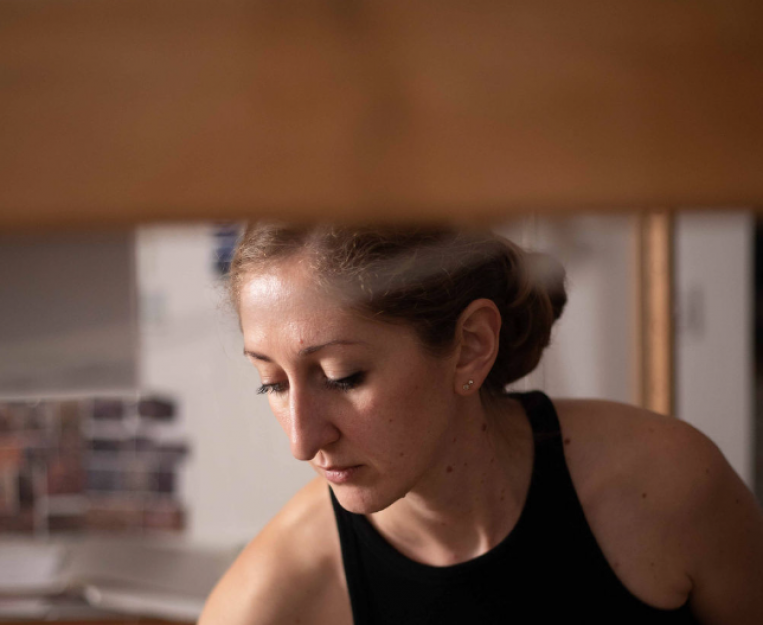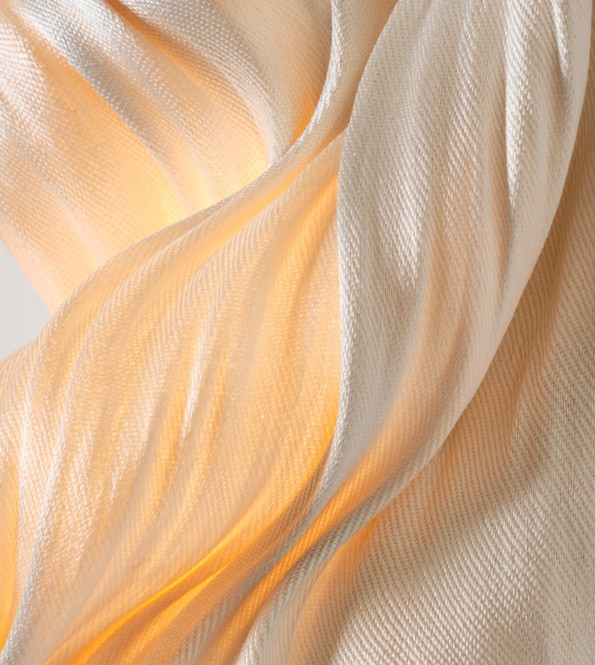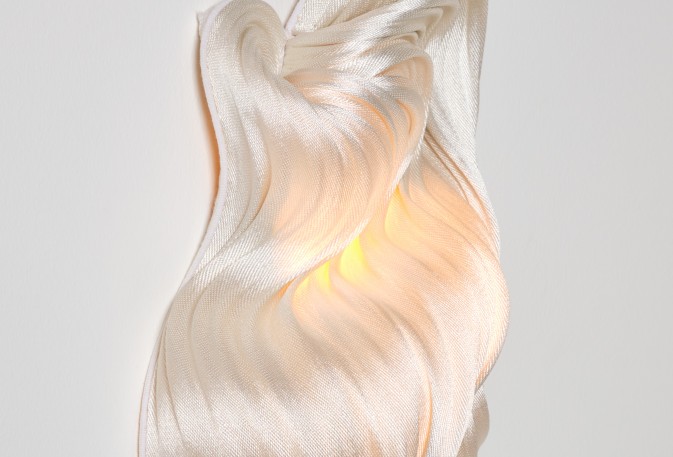Mémoire Désir, Les racines poussent dans l'ombre


Using a sensitive approach to textile experimentation, Morgan Baroghel-Crucq offers a contemporary vision of the ancient craft of weaving.
Since 2014 she has explored the possibilities of weaving non-textile materials and she weaves as a way of highlighting the handmade. The materials used, the unpredictable designs, the techniques and the movements are some of the ways of confirming the richness of artisanal production and detaching herself from industrial uniformity.
Her creations are at the crossroads of design, artisanal craft and art and her works are frequently made-to-measure pieces destined for use in interior design projects.
She finds inspiration in her personal vision of beauty: the silence of the landscape and the light that reveals it to us. Her works are born of a vision that is both aesthetic, scientific, historical and philosophical.
Born in 1986, Morgan Baroghel-Crucq graduated from the textile department of ENSCI in 2009. Her Paris atelier opened in 2014 and is now based in Aix-en-Provence. The Fondation d'Entreprise Banque Populaire has supported Morgane's textile research since 2016, and she was awarded the prize for the Jeune Création of Métiers d'art in 2015. In 2019, she joined the Académie des Savoirs Faire, run by the Fondation d'Entreprise Hermès.
- What drew you to weaving?
When I was younger, I watched my mother and grandmother practice different textile techniques. A strong memory is my grandmother crocheting: she created a material from a thread and a tiny tool and I found it both magic and crazy to have the talent of transforming the material. These materials had the aim of being used and I found this so rewarding.
At the same time, I was also a creative and curious child. I naturally ended up doing an applied arts curriculum at college then, after a foundation at l’ENS in Cachan in design, I went into the textile department of l’ENSCI in Paris. I learnt numerous textile techniques there but the true revelation was weaving. I had an infinite potential of creation and possibility. I spent three years learning complex techniques in weaving wires. It is like learning another language…
- How do you think your work has evolved over the years? How do you think it could change in the future?
I have always seen my work at a crossroads of art, design and artisanship. I experimented lots at the beginning, with the desire to make something textile from non-textile materials. Today, I have more and more the feeling of creating more personal pieces, larger too. To go beyond the material. I had an equal desire to collaborate on a multidisciplinary level with other artists, artisans, or even go outside the box with more unexpected collaborations.
- What made you want to curate Mémoire Désir?
I co-created the exhibition Confluences in 2021 with 3 artists (Laurentine Périlhou, Solenne Jolivet and Lucie Touré) in a gallery in Paris. It turned out to be an incredible human experience with a very strong anchoring and sharing. When Nicolas Mazet proposed to me an exhibition project at Gallifet, I had never seen myself exhibited alone and we quickly changed to a collective project. The energy of Confluences allowed me to envisage a unifying project like this one.
- In the Rebecca Solnit quote that inspired this exhibition, she talks of the landscape forming our identity. How have you succeeded in transposing your personal surroundings in your work?
It is a process, a quest! And like all quests, the path is more important than the destination. The personal construction which is in itself the development is fundamental. I spend lots of time observing the movement of nature, the layers which tell the story of earth and try to replicate my vision in weaving.
- Artisan craft and careers within the arts are at the heart of this exhibition. Do you think that ‘craft’ has a future ahead of it?
Definitely! The artisanship must highlight France as international, of our culture but also out workshops with traditional gestures and contemporary creations. The current problem is that of training: they have been reduced to the gain of training of designers and the hours of workshops have decreased. It is necessary to find solutions for the next generations to conserve the mastery of the work. From my side, I fight in order that children can be taught with materials and skills from a young age.
- What can you imagine following Mémoire Desir?
I would like to continue this release, a little like season 2. With everything it is in the same line of finding one’s identity and crafts obviously. Perhaps speaking of grounding, well okay I had already had a proposition very clear in my head.
© Jack de Marzo, Marion Saupin

